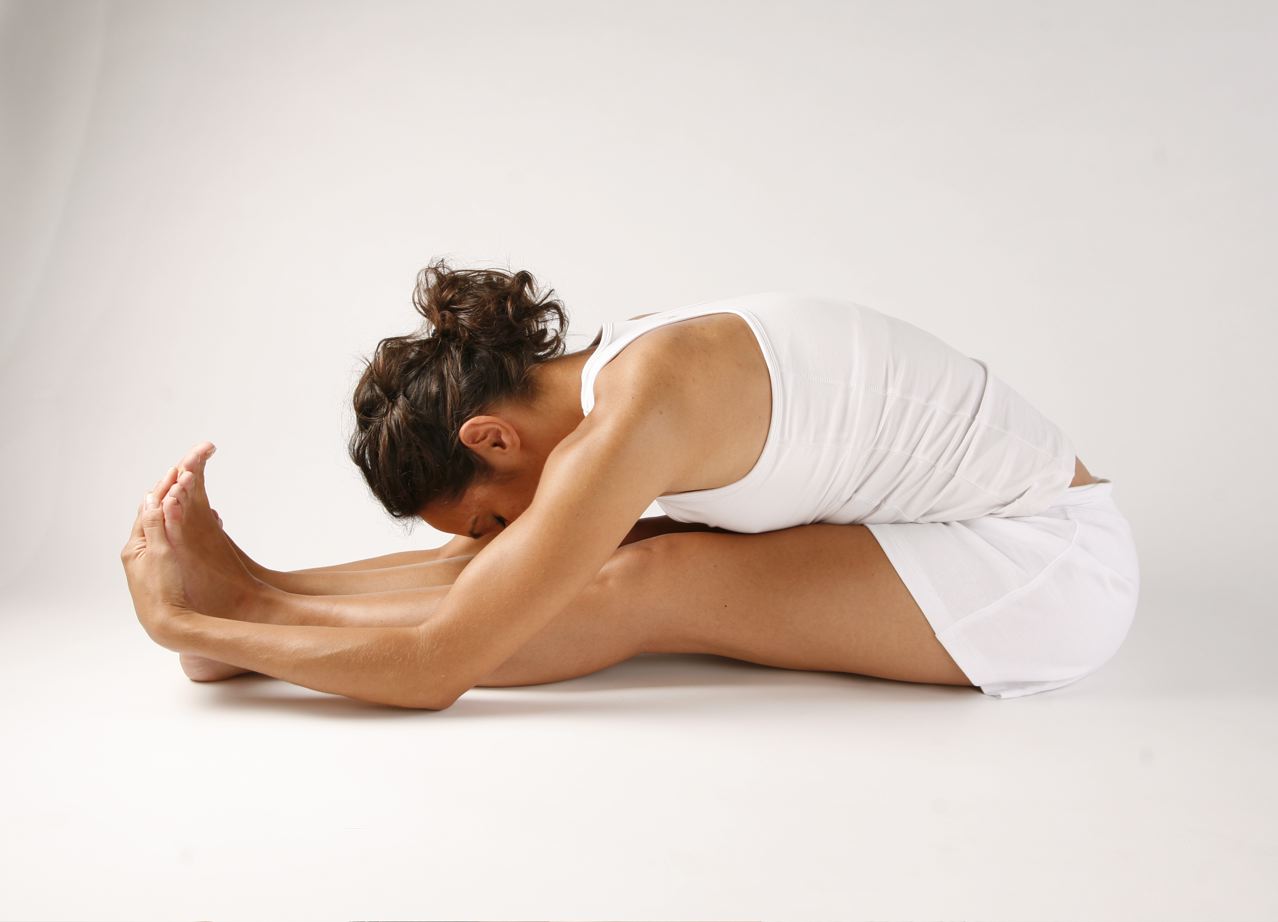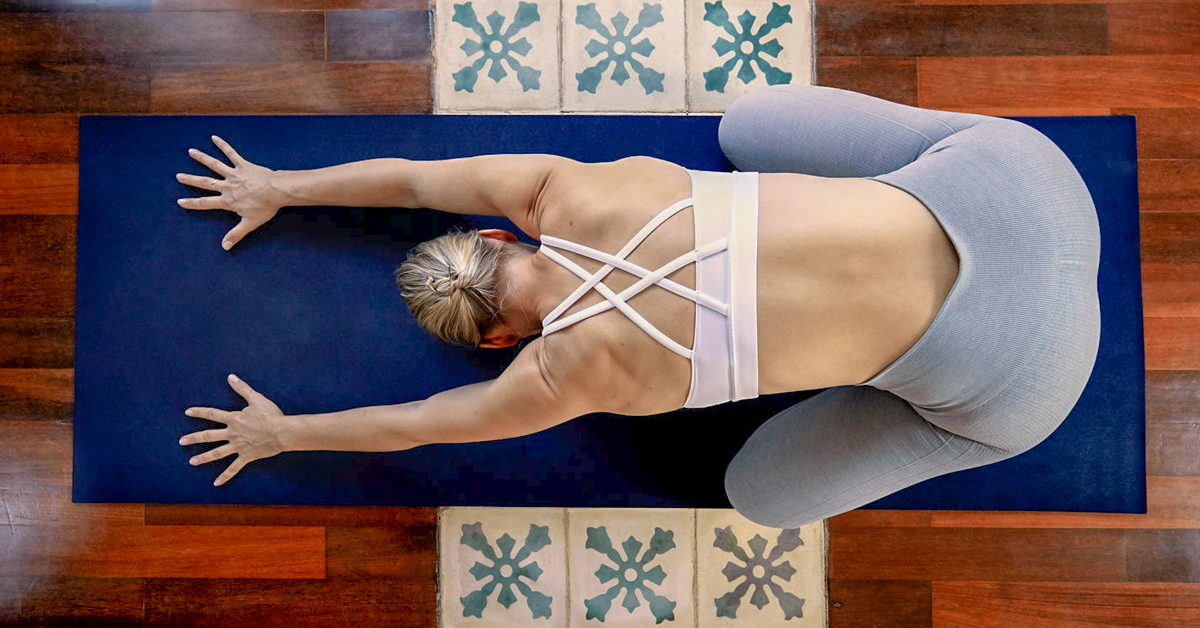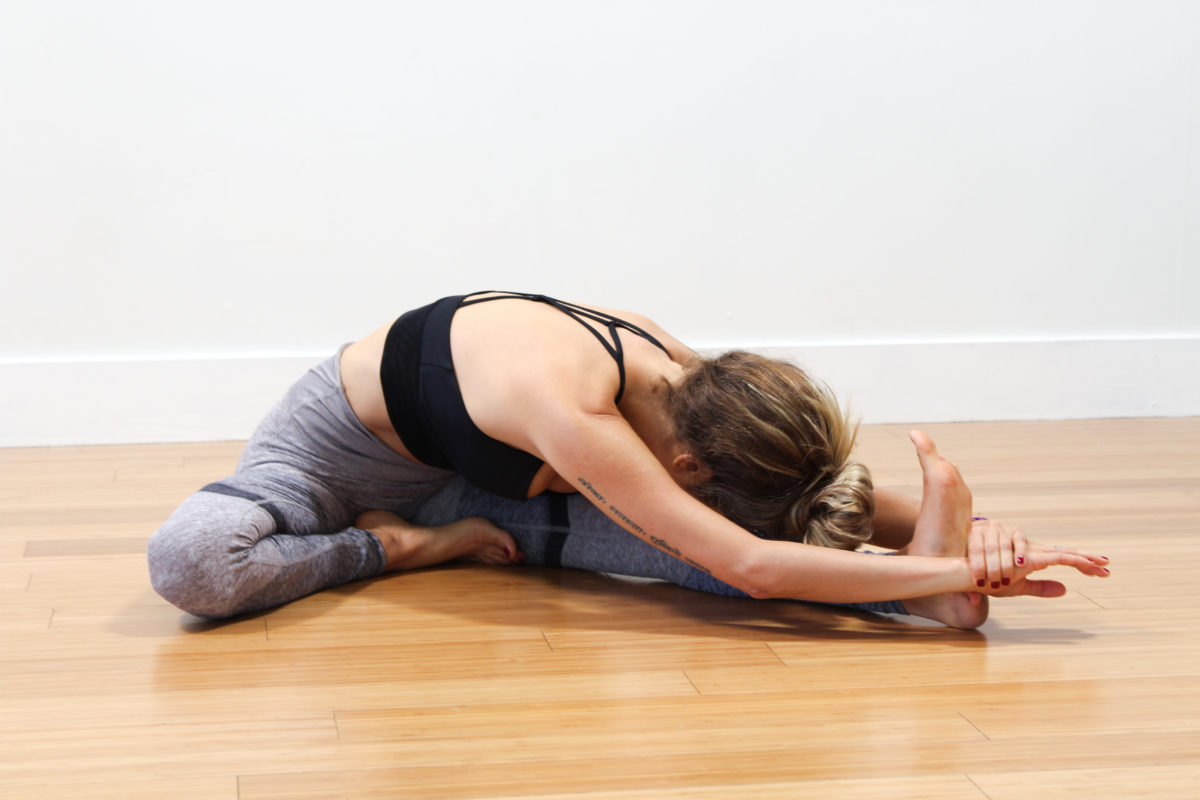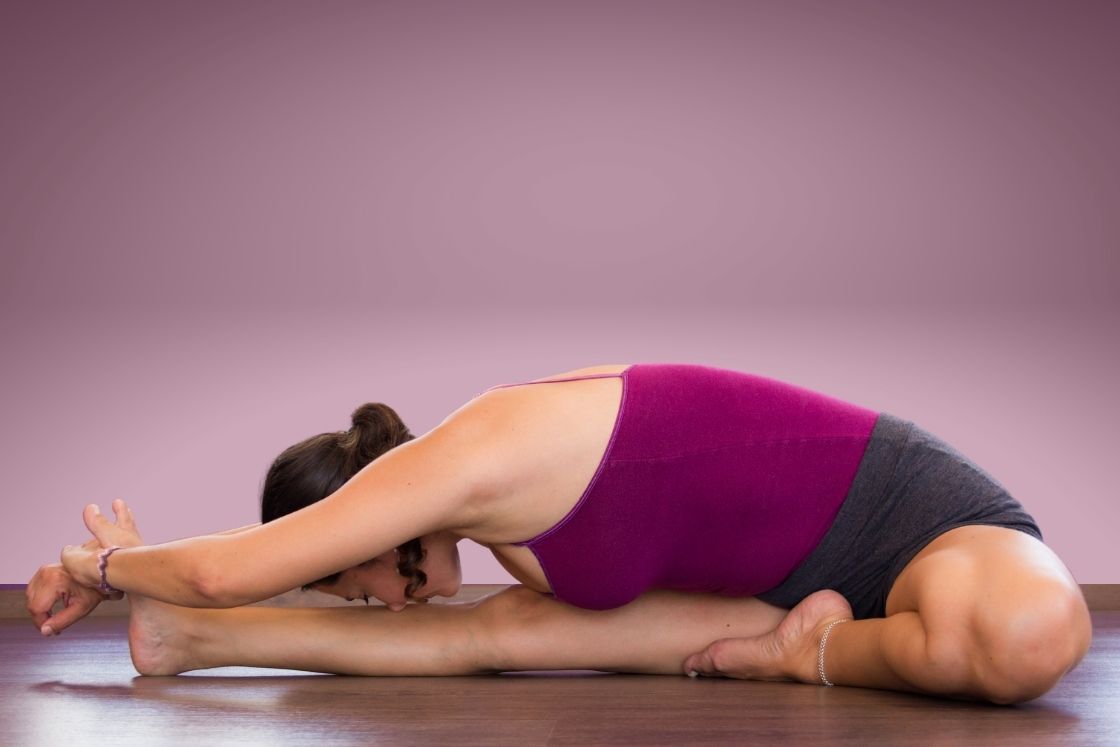
The asymmetrical head knee pose is a forward tilt that creates intense stretching on the back of the active leg. Unlike the symmetrical version of the exercise, certain imbalances and differences between the left and right sides of the body could be detected here, and by properly applying this and other exercises, they could be minimized.
Contraindications
- Do not perform with poor body control (beginners);
- Do not perform for old injuries in the hip joints, injuries in the deep pelvic muscles and scoliosis;
- Approach with caution in the presence of increased lordosis of the lower back (duck line of the spine).
Muscles involved in stretching
Main stretched muscles on the side of the stretched leg
- Muscles of the back of the thigh (Biceps femoris, Semimembranosus, Semitendinosus, Adductor magnus)
- Calf (Gastrocnemius)
- Large gluteus maximus
- Broad back muscle (Latissimus dorsi)
- Long back muscles – on both sides (Erector spinae)
- Posterior shoulder heads – on both sides (Deltoideus posterior)
Stabilizing muscles on the side of the stretched leg
- Muscles of the thigh (Rectus femoris, Vastus lateralis, Vastus medialis, Tensor fasciae latae)
- Rectus abdominis,
- Iliopsoas
- Middle gluteus muscle (Gluteus medius)

Options according to the position of the passive foot:
- With the heel behind the seat and the knee at right angles;
- With a heel on the outside of the seat and parallel knees;
- With the foot on the ground and the knee facing the chest.
- Take a seat with your legs straight forward and your spine straight.
- Bend the knee of the right leg and place the foot on the inside of the left. Keep the quadriceps of the outstretched leg tight so that the back thigh muscles reach their maximum length and the knee remains unbent.
- Keeping your spine straight and your lower abdomen tucked in, begin to tilt your torso forward until you feel a stretch and a slight burning sensation in the back of your left leg.
- Relax your arms on both sides of your left leg, do not try to grab your left foot – this would compromise the upright position of the back in case the length of the back thigh muscles is insufficient.
- Hold for 15-20 seconds and repeat for the other leg.
Work to the limit of comfort without experiencing pain in the posture phase. Distinguish acute, “breaking” pain from burning and tensile sensation when stretching muscle fibers.
The exercise has been used for many years in general physical training, as well as in specific sports that require a large range of stride. Although it is accused of being an “exercise with an increased risk of injury”, it could in fact be potentially dangerous only if the technique is incorrect and one does not comply with one’s own capabilities. With proper technique, it would be useful both for athletes practicing various sports and for non-sports people undergoing immobilization.


